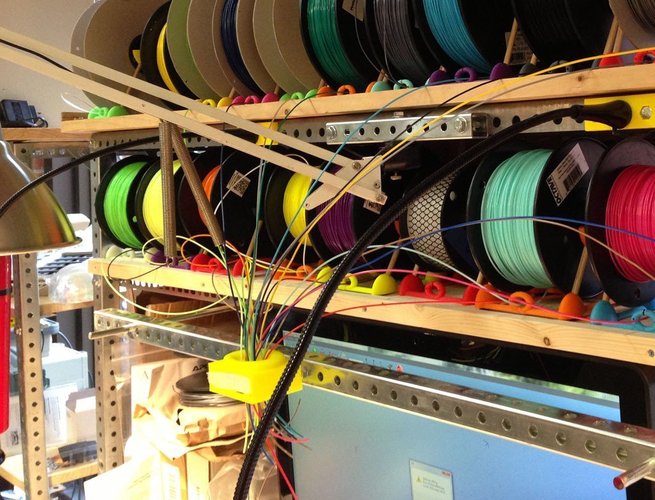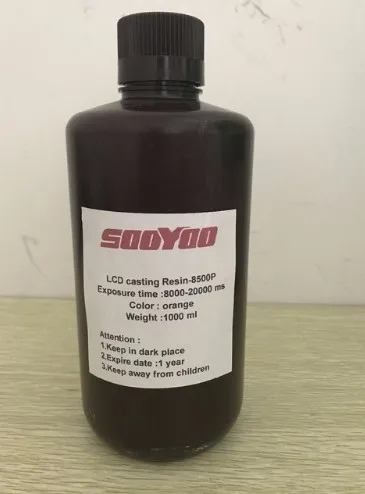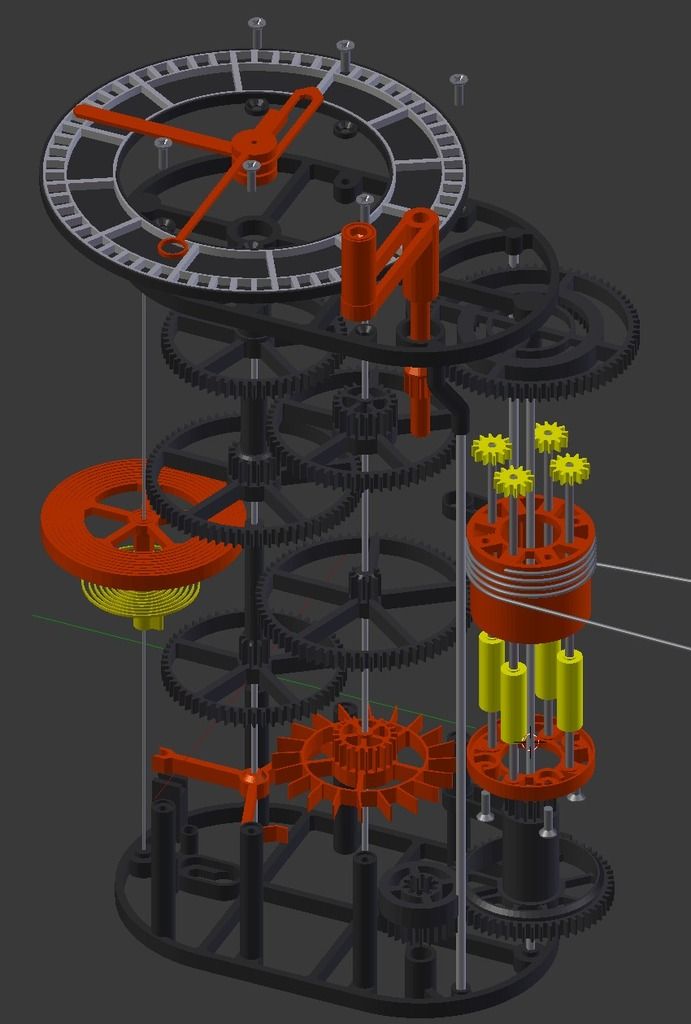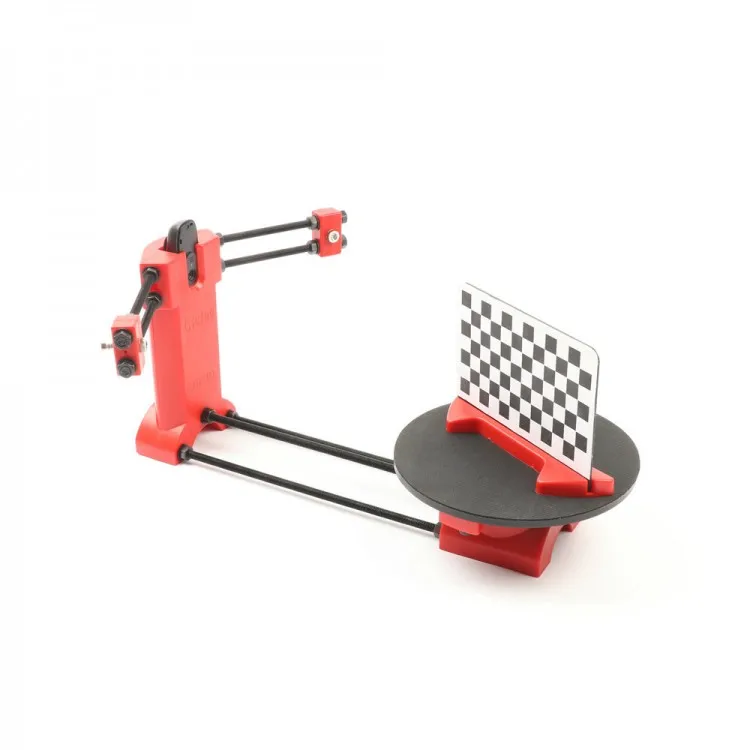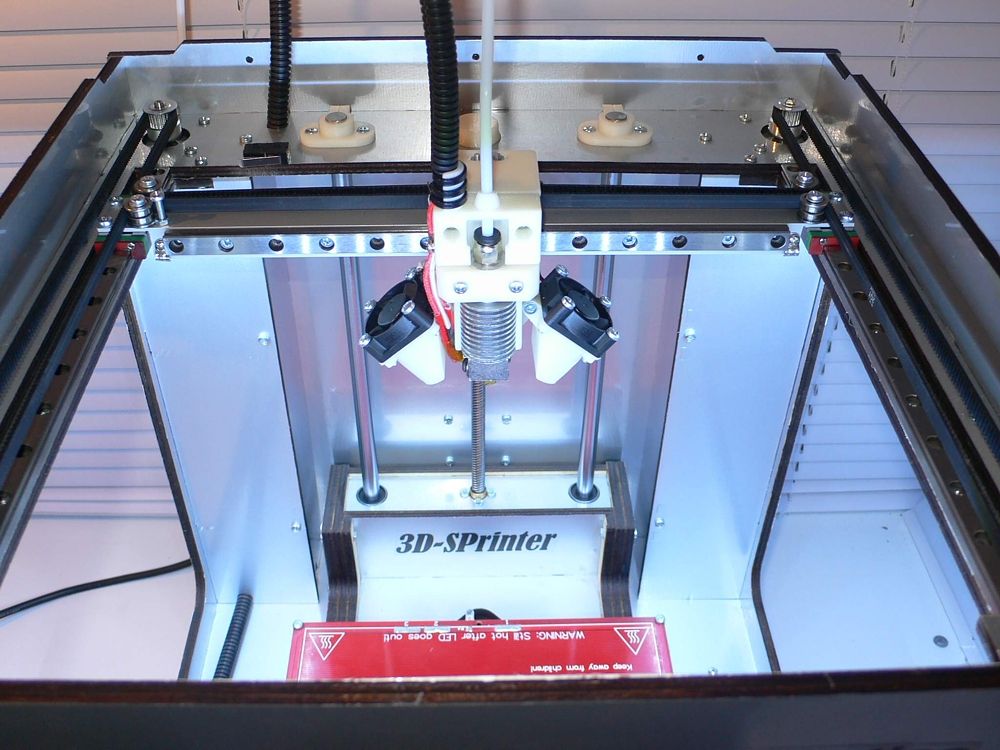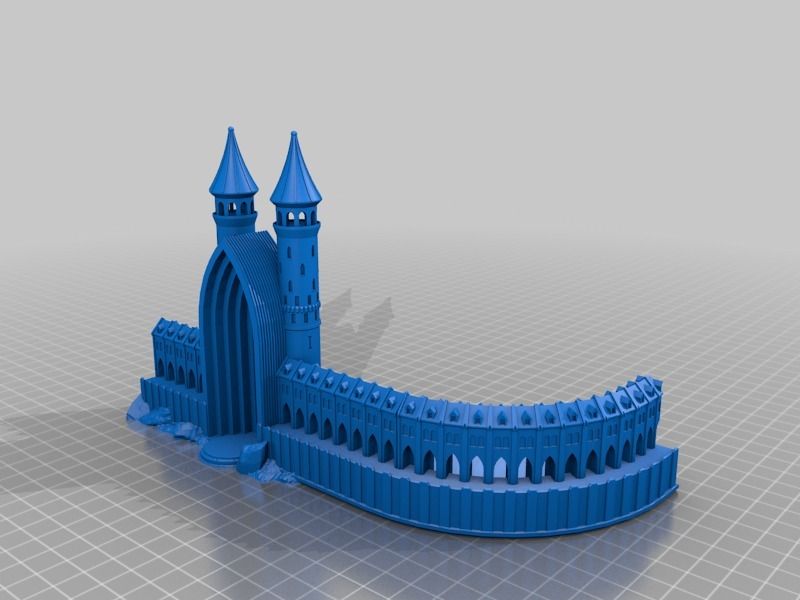3D printer storage
How to Store 3D Printer Filament and Keep it Dry
(Image credit: Tom's Hardware)Storing filament for your 3D printer is a very personal matter. Some people like to display unwrapped rolls like books on a shelf, while others keep their stock locked away in moisture controlled Tupperware. Which is right?
Both, actually.
If you only print with PLA, store it in a low humidity environment and move through your stock rather quickly, keeping your rolls unwrapped is fine. But if your workshop is in a garage – or you work with more advanced filaments like TPU and nylon – moisture will become a problem.
Why Moist Filament is a Problem
It defies logic, but filament that has absorbed moisture can get brittle, bubbly or stringy. In extreme cases, it will steam and hiss as the filament is heated. Check out this short video from Maker’s Muse who was printing PLA during a record rainy Australian summer.
Given enough time, moisture will eventually seep into PLA. For example, this roll of yellow PLA was left unwrapped for about 6 months and is now stringy.
All 3D printing filaments are created from blends of hygroscopic polymers that are capable of trapping moisture. This leads to brittleness, stringing and failed prints. However, some types of filament are less susceptible to water damage than others. PLA is fairly resistant to moisture and may print perfectly fine after years in the open air, provided that it’s being stored in a room with fairly dry conditions.
Nylon, TPU and even PETG are an entirely different matter. When some of these filaments are left unwrapped for even 24 hours, they can pick up enough moisture to cause a failure.
Below, we’ll show you several ways to keep your filament safe and organized. We also have instructions on how to dry out filament that’s absorbed moisture so you can use it again effectively.
Shelves for Open Filament Storage
If you want to display your filament out in the open, and don’t mind risking moisture damage, you’ll need to buy sturdy shelving that can handle the load. One option is a custom-made wall rack, like this one from RepKord. The design is free to download from PrusaPrints.org and is made of 3D printed or laser cut parts and metal conduit pipe available at any hardware store.
One option is a custom-made wall rack, like this one from RepKord. The design is free to download from PrusaPrints.org and is made of 3D printed or laser cut parts and metal conduit pipe available at any hardware store.
The rack cradles spools between two lengths of pipe to prevent them from rolling. It can be made as long as you like to hold any amount of filament.
(Image credit: RepKord)Courtney Blum from Filament Stories goes one step further with a filament bunker. She converted a basement closet into a climate controlled storage unit for over 500 rolls of assorted filament, all organized by color. A dehumidifier constantly pulls moisture from the room, and hygrometers on the shelves let her know that every spool is cozy and dry. Tension rods keep the spools from rolling off the shelving.
(Image credit: Courtney Blum)Fight Filament Moisture with Desiccant
Desiccant is a drying agent that attracts and traps moisture. Silica gel is a common desiccant you’ll find tucked inside boxes of filament, electronics and just about any product that needs to stay dry during shipping.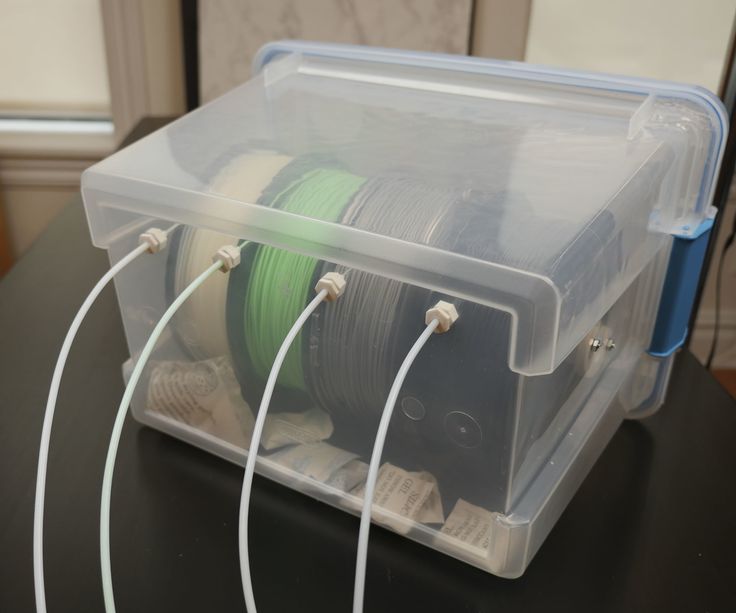
You can reuse desiccant packs that shipped with your filament, but I would suggest trying color changing Dry & Dry . Each pack contains color changing beads to let you know when the silica is moist and needs to be dried out again.
I opened a pack of Dry & Dry and exposed half of it to water to show the color beads at work. The yellow beads are dry, the dark green beads are wet.
(Image credit: Tom's Hardware)Silica gel can be dried in the oven and used over and over again. Simply place the packets on a cookie sheet and bake at 200°F for 30 minutes to 2 hours.
One gram of Dry & Dry can protect 120 cubic inches, so a cereal box sized container would only need 3 grams to keep it dry.
Five DIY Containers for Filament Storage
- Method 1: Keep filament in the original package.
If you’re lucky, your filament came in a resealable bag, so check both ends for a zip lock before randomly hacking the package open.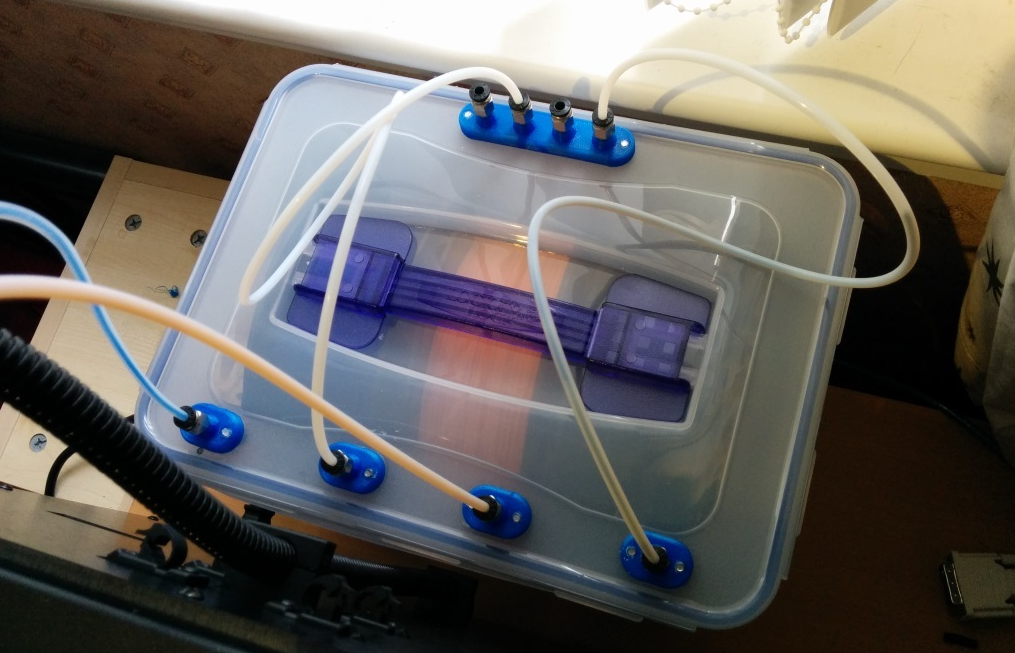 When you’re done, return the spool to its original bag with a fresh silica pack.
When you’re done, return the spool to its original bag with a fresh silica pack.
- Method 2: Use ordinary kitchen zip bags.
Many rolls– especially those on cardboard spools– will fit in a one gallon zip lock food storage bag. Don’t use the one’s with sliders, the opening isn’t wide enough. Thick plastic 1KG spools may need a larger “jumbo” bag.
- Method 3: Keep spools in plastic cereal boxes.
Cereal boxes are designed to keep moisture out, so they’re perfect for holding single spools. It’s a more expensive option than plastic bags, but if you want your shelf to look fabulous – and can afford the extra $8-10 a box for storage – this is a great looking option.
This 18.5 cup box I found at Walmart is wide enough to hold a full 1KG spool. If you’re ready for a little DIY, you can add a spool holder and PTFE connector to use this as a dry box while you print.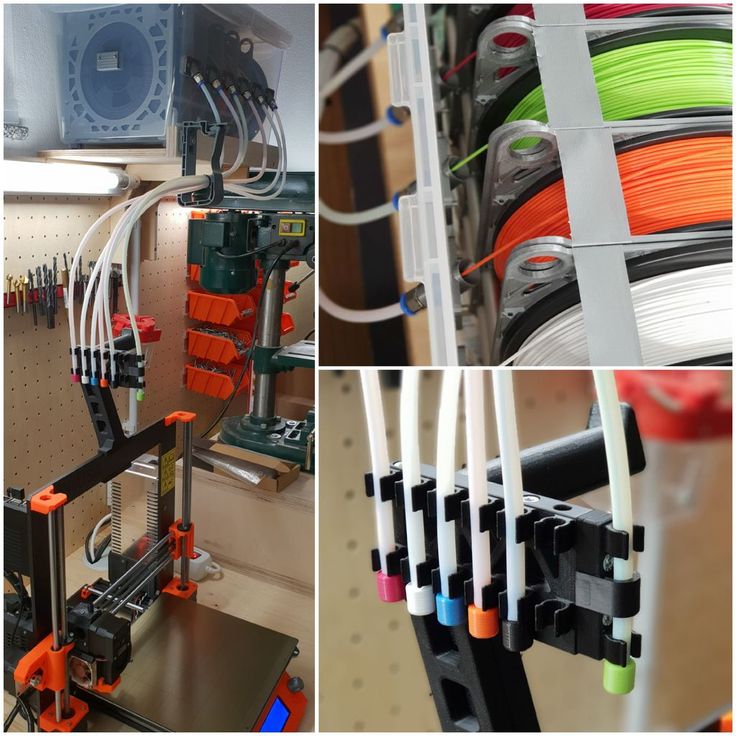
- Method 4: Use vacuum bags to reseal filament.
When you really want to keep the moisture out, vacuum seal your spools.
eSun makes a complete vacuum sealing kit for filament. It comes with thick plastic zip bags equipped with a valve and a hand pump for removing air. You get enough bags, silica gel packs and humidity monitoring cards to seal 15 spools.
- Method 5: Plastic tubs for mass storage.
Cheaper than individual boxes, a large storage box with a gasket can keep several spools dry. Large tubs are great for storing filament in closets, garage shelving or stuck in the corner of your workshop.
This 72 quart tub held 16 full 1KG spools, making it a bit awkward to carry.
Dry Out Damaged Filament
Moisture damaged filament can be saved with a little help from a drier. Some sources suggest using your kitchen oven.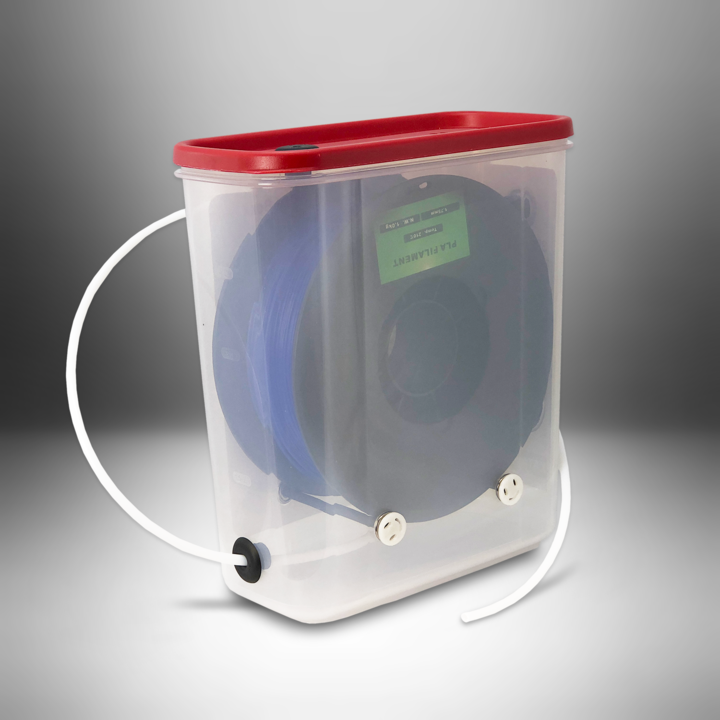 However not all ovens can maintain the proper temperature and risks melting your entire roll.
However not all ovens can maintain the proper temperature and risks melting your entire roll.
DIY Filament Dryer
Taulman3D posted directions for a great DIY dryer made from a 5 gallon bucket, a trouble light and dowel rods. Holes are drilled into the bucket for the rods, ventilation and cord access. The company uses this bucket hack in its own lab and say it can dry two spools overnight.
Buy a Filament Dryer
You can purchase a ready-made dryer from several sources online. I own the Sunlu FilaDryer S1 , which can dry one roll at a time in about 6 hours. The Sunlu dryer has a temperature range from 35c to 55c, which isn’t hot enough for nylon, but can handle most hobby-level filaments.
(Image credit: Tom's Hardware)If you need to dry nylon filament, try the Print Dry Pro , which reaches 75c.
Drying Times for Common Filaments
Swipe to scroll horizontally
| PLA | 50c | >3 hours |
| PETG | 50c | >3 hours |
| ABS | 55c | >3 hours |
| TPU | 55c | >4 hours |
| ASA | 55c | >4 hours |
| Nylon | 75c | >12 hours |
Desiccants can be dried at 65c for at least 3 hours.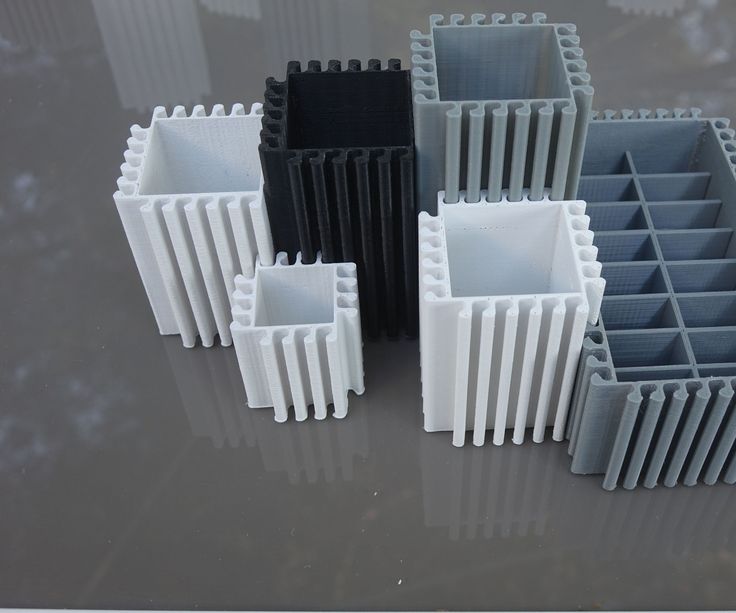
Professional Filament Storage Option
(Image credit: RepKord)If you want something more classy than a tote box, there’s the RepBox. It can hold six 1kg spools (or 12 half kg spools) in a sealed case that sits next to, underneath, or hung on the wall above your printer.
The RepBox has individual holes for each spool to feed through, allowing you to print directly from the sealed box. It’s also a popular option for tangle free Multi Material printing. Starting at a pricey $149, boxes come in wood finishes, clear acrylic and can be customized with your logo.
Get instant access to breaking news, in-depth reviews and helpful tips.
Contact me with news and offers from other Future brandsReceive email from us on behalf of our trusted partners or sponsorsDenise Bertacchi is a Contributing Writer for Tom’s Hardware US, covering 3D printing.
Topics
3D Printing
Filament Storage For 3D Printing: Your How-To Guide
Filament storage poses a big problem for 3D printing enthusiasts.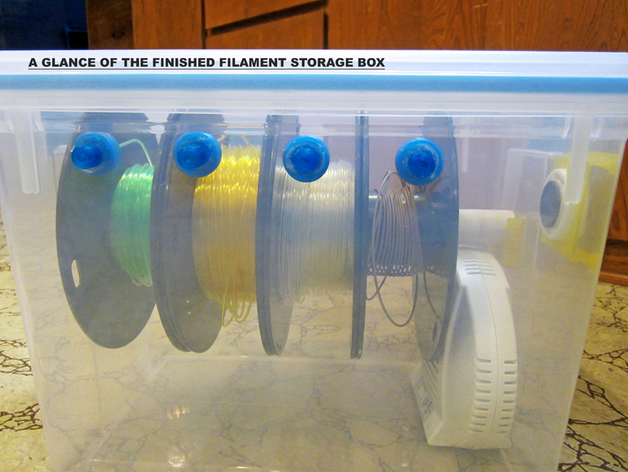 Incorrect storage results in moisture from the air making its way into your filaments, which as you’ll see soon – is bad news. Read on for your guide to storing filaments correctly so that you don’t end up losing money on filaments that give you low-quality prints.
Incorrect storage results in moisture from the air making its way into your filaments, which as you’ll see soon – is bad news. Read on for your guide to storing filaments correctly so that you don’t end up losing money on filaments that give you low-quality prints.
Before we get into filament storage, a brief note is needed on what happens to poorly stored filaments.
Filaments used for 3D printing purposes are polymers, meaning they can be broken down in a process known as hydrolysis. As a result of moisture from the air coming into contact with your filaments when they are poorly stored, the polymer breaks down when it’s heated at the point of extrusion, rendering the filament weakened.
Any parts printed with this “wet” filament will not look as polished or pristine as you want them to. Furthermore, “wet” filament necessitates a higher temperature for proper extrusion. The likes of nylon, polycarbonate, and copolyester filaments are very susceptible to the occurrence of hydrolysis when they become wet and are heated.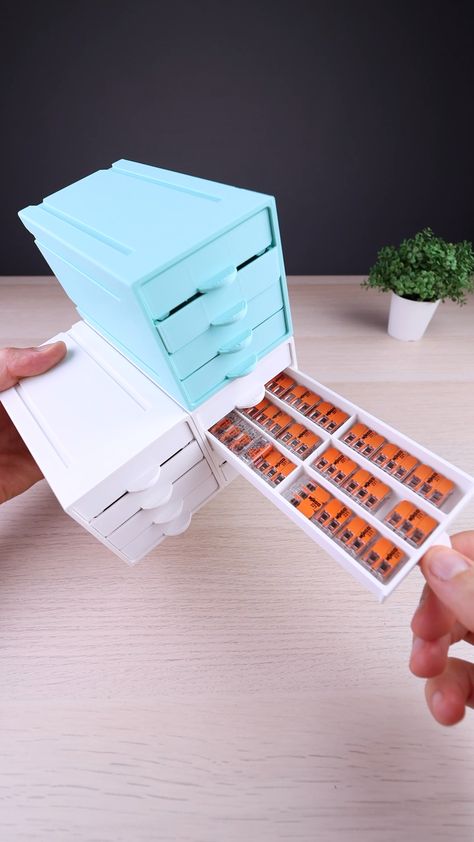
3D printing filaments tend to be hygroscopic, which is a fancy way of saying they easily absorb moisture. So, the storage problem comes down to avoiding contact with humid air. The rest of this article focuses on how you’ll achieve this dry environment for your filaments.
Hint: the below image is a prime example of how not to store your filaments. The truth is that leaving them out in the open pretty much guarantees contact with moisture, which could ruin the printed product.
Vacuum Bags
There are many storage solutions available for your filaments but a significant proportion are either expensive, impractical, or too time-consuming. As a hobbyist, you want to keep things as cheap and simple as possible.
Enter the humble vacuum. Or to be more specific; vacuum bags. High-quality vacuum bags provide an air-free environment for your filaments. You’ll want to purchase bags that have a vacuum valve for sucking the air out. Additionally, you’ll need to go for bags with a double-zipper mechanism for maximum impermeability to air. Creating an air-free environment in the bags is as easy as using a normal household vacuum cleaner on them to suck the air out.
Creating an air-free environment in the bags is as easy as using a normal household vacuum cleaner on them to suck the air out.
You’ll fit about 4 filament spools in one vacuum bag. Packets containing six bags are available for roughly $20. This should be more than enough for any 3D printing hobbyist. In summary, this is a cheap and easy solution to the issue of filament storage and one that you should consider.
Pro tip. With vacuum bags, some moisture inevitably remains inside the bag. No vacuum is absolute, although the amount of moisture remaining is often close to negligible. To ensure you get rid of any remaining moisture, use some silica gel beads. Nearly everyone is familiar with these. They come in small packets with goods such as trainers and food products because they are amazing at absorbing moisture. Simply place the packets of silica beads inside the vacuum bags alongside your filament. These silica gel dry packs tend to be relatively cheap, with 20 bags on Amazon selling for roughly $10.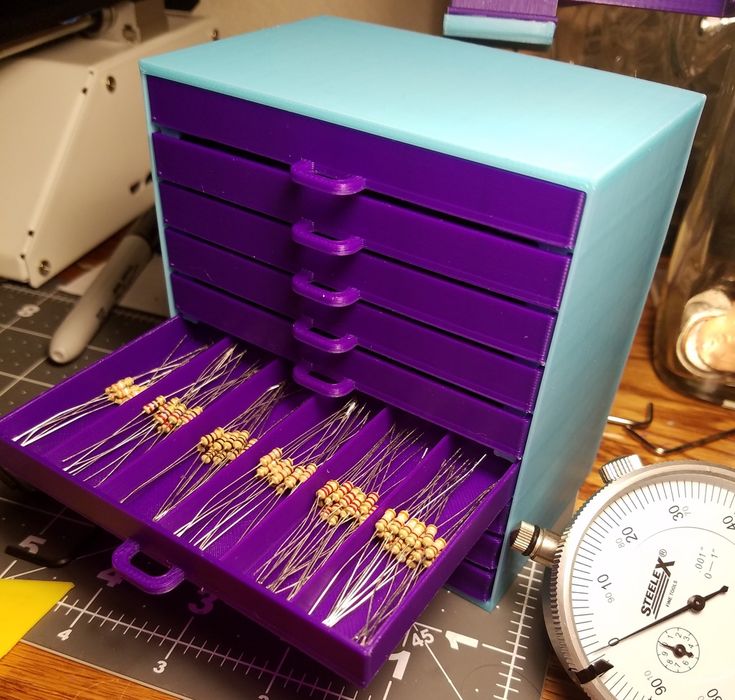
Another bonus tip is to use filament clips when storing your spools in vacuum bags. The end-points of filaments can be pretty sharp and easily pierce a hole in the vacuum bags, exposing the filament to the moist air you’re trying to protect it from. Filament clips are cheap and not using them would be equivalent to taking a really unnecessary risk.
Dry Box
Another great solution to creating a moisture-free environment for filament storage is a dry box. These cabinets provide the kind of low-humidity environment that is perfect for filament storage. The technology works through a electronic dehumidifier system that constantly dehumidifies the interior of the box. As a result, you’ll limit the contact that your filament has with humid air to practically nothing. For you, this means stronger, more reliable prints.
Storage Boxes
Transparent storage boxes with sealed lids present another great way to store your 3d printing filaments correctly. The idea behind the sealed lids is that no new moisture can reach the filament from outside.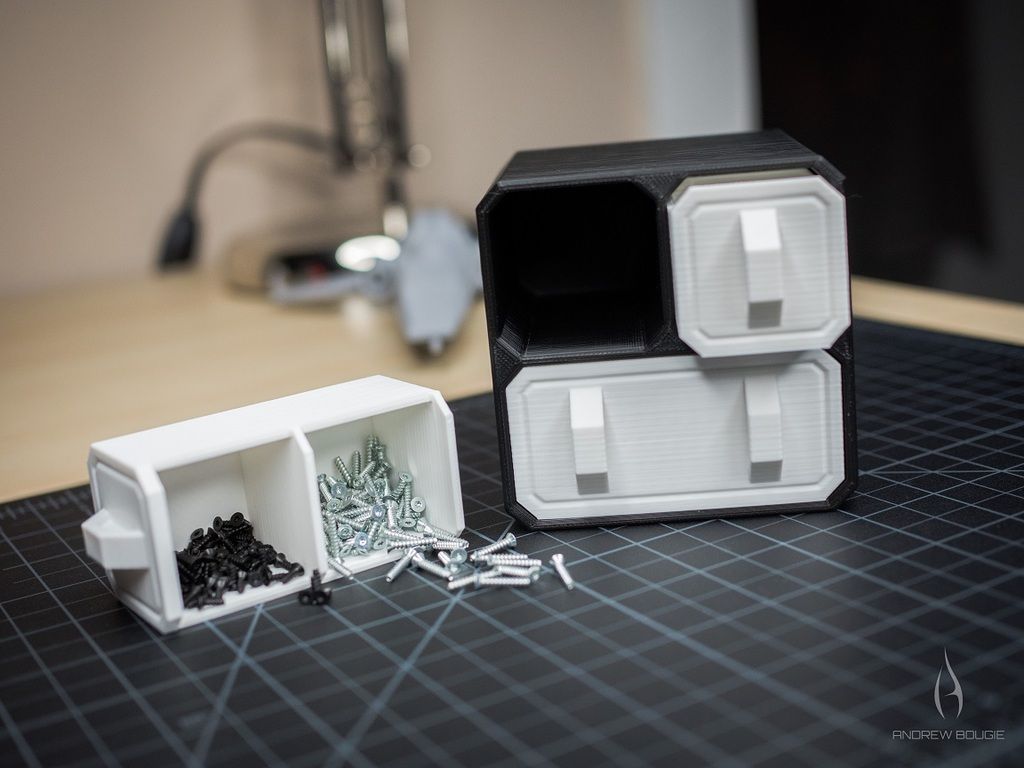 The need for transparency arises from a practicality perspective. If you cannot see inside the boxes, you’ll never know what filament is inside which boxes.
The need for transparency arises from a practicality perspective. If you cannot see inside the boxes, you’ll never know what filament is inside which boxes.
In terms of size, you’ll want to aim for something big enough to stack a few spools of at least 20 cm in diameter. A good base size to aim for is something of roughly 40 cm in length and 30 cm in width. The height depends on how many filament spools you plan to stack but around 40 cm should be fine.
Dehumidifiers
The one issue with storage boxes is the need to reduce the humidity of the air that remains inside the box once you place the filament in it. To solve this conundrum, you can purchase a dehumidifier. One could forgive you for thinking that this solution already lacks practicality. But fret not; dehumidifiers require no batteries or cords to operate. And they are completely renewable. In other words, they are the very definition of practical.
A good dehumidifier should set you back as little as just $15-20 on somewhere like Amazon.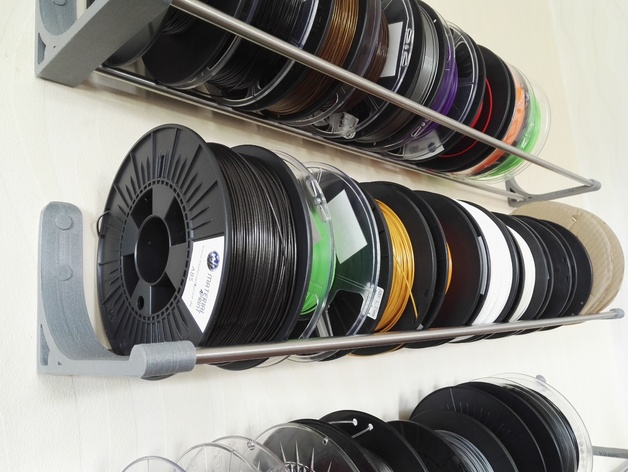 Check out the Eva Dry E-333 for a good example. These dehumidifiers need to be renewed approximately once every month. To renew your dehumidifier, simply plug it into a power outlet when the silica gel beads change color. Most dehumidifiers come with a color indicator that helps you identify when it needs renewing.
Check out the Eva Dry E-333 for a good example. These dehumidifiers need to be renewed approximately once every month. To renew your dehumidifier, simply plug it into a power outlet when the silica gel beads change color. Most dehumidifiers come with a color indicator that helps you identify when it needs renewing.
Like with the vacuum bags, silica gel beads are used to absorb moisture. Since you’ll fit a maximum of around 5 or 6 spools in each box, two storage boxes and two dehumidifiers should be enough for most people’s needs. The fact that your dehumidifier is renewable offsets that initial investment. When you are sure that your dehumidifier is fully charged, simply place it inside the storage box with the indicator facing outside the box.
If you want to get fancy, or you’re having trouble checking what color the beads are on your dehumidifier, you can purchase some humidity indicator cards. Ultimately, this step is not necessary but it can be helpful for easily gauging the humidity level. Simply place the cards inside your box and you’re all set.
Simply place the cards inside your box and you’re all set.
Oven-Drying
So far we’ve looked at some cheap and practical solutions for storing filaments. But it also makes sense to address the issue of drying filament that is already saturated with moisture. Printing with moist filament means using filament that is weaker and inconsistent than normal. In other words, it’s likely to ruin the quality of your printed product.
To dry your filament, you can use that all-around useful appliance–the household oven. More specifically, you’ll need a fan oven because this kind of oven distributes air evenly throughout the interior. The even flow of air means that warm air constantly circulates around the spool.
A crucial factor to consider when deciding whether your filament is suitable for oven-drying – is the Glass Transition Temperature (Tg) of the material. This is the temperature region where the polymer changes from a hard, glassy material to a soft, rubbery material.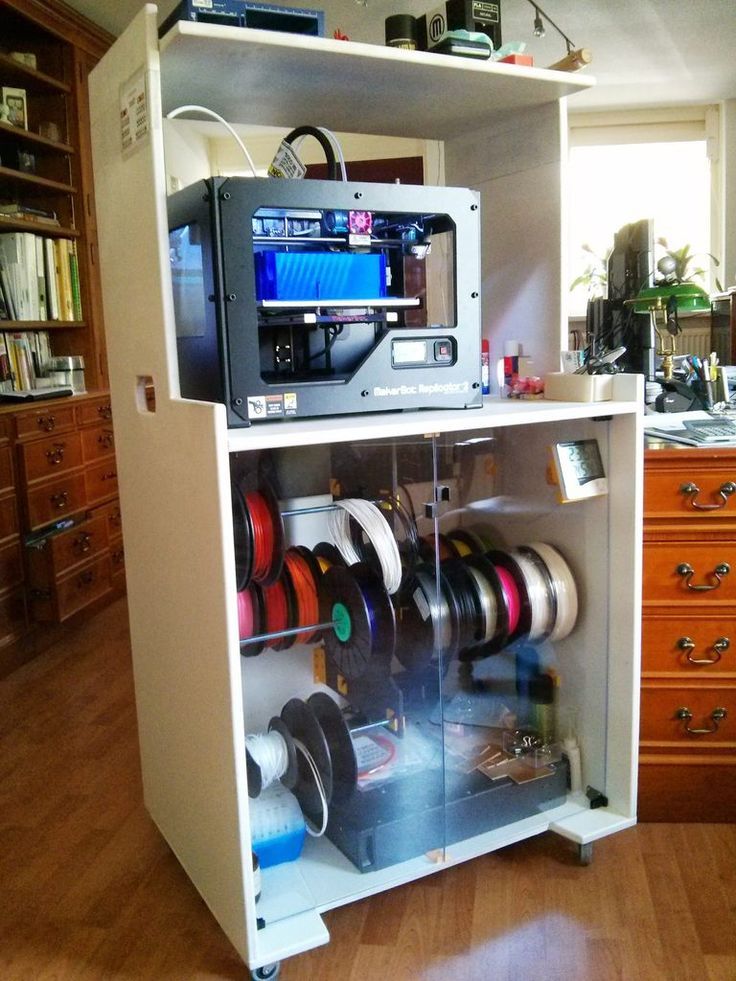
PLA, for example, has a Tg of just 60 degrees Celsius, making it unsuitable for oven-drying unless your oven doesn’t have a minimum heat setting. On the contrary, other filament types like ABS has a Tg of 100 degrees. The important thing if you decide to dry any filament is to research that filament’s glass transition temperature. If it’s around 80 degrees or higher, it should be fine in there for an hour at 60-70 degrees. If the Tg is less than 80 degrees Celsius, you can try to dry the filament at a lower temperature of around 30-40 degrees Celsius, but perhaps leave it in there for longer.
Summary
When 3D printing filament absorbs moisture from the air around it, the following issues can occur:
- The filament becomes brittle and more prone to breakage
- The extruding temperature increases
- The filament loses its tensile strength
- There’ll be steam or bubbling once the filament passes through the hot end of the extruder, leading to an undesirable finish
To store filament correctly so that it doesn’t come into contact with moist air, you have three practical and relatively cheap options:
- Use double-zipped vacuum bags with a valve for sucking the air out with a standard vacuum cleaner.
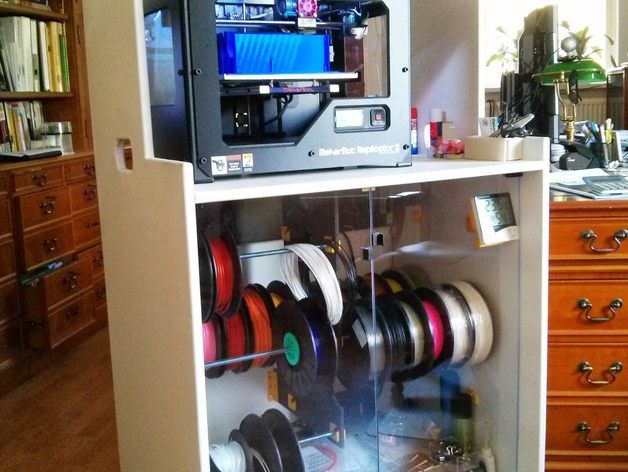 Place silica gel beads inside the bags to absorb any remaining moisture.
Place silica gel beads inside the bags to absorb any remaining moisture. - Store your filament spools in transparent storage boxes with sealed lids. Use a cheap renewable dehumidifier to absorb any remaining moisture inside the boxes.
Any filament that you suspect has come into contact with moist air needs to be dried out in the oven.
Using the above guide, you should be able to store your filament correctly from now on and improve the quality of your 3D prints.
Kickstarter 3D Printer Trivia
In this review, we'll take a look at a few Kickstarter projects that will help make your 3D printing even a little better. Some of these projects have already been completed as part of Kickstarter and have moved to the stage of mass production, others “did not take off” for one reason or another, but they can throw an idea or two, and some are still at the stage of crowdfunding and you can participate in them.
The 3D Printer Shield
For whom: for any owner of a 3D printer.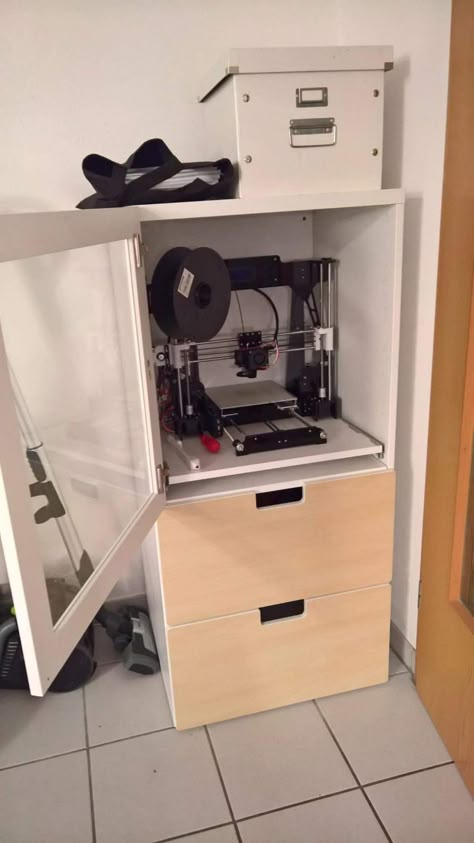
The 3D Printer Shield is an easy way to improve your print quality. We all know how a temperature drop can harm quality - a simple draft from an untimely open window or door is enough to disrupt the structure of the printed part.
The 3D Printer Shield is a composite transparent panel shield that protects the printer from drafts, sudden changes in temperature, dust, children, cats and other things that can interfere with printing. And the surrounding people are partially protected from the noise of the printer itself and the evaporation of the material during printing. nine0003
The device is easy to install and available in three sizes to fit various 3D printers.
Small - 30 x 30 x 31 cm
Medium - 53.5 x 54 x 54 cm
Large - 68 x 77 x 67 cm
pre-order is from $60 to $175 - depending on the chosen size and the date of the order (the sooner, the cheaper).
It is unlikely that the project will raise the required $10,000 before January 21, but the idea is interesting and you can think about creating such a thing on your own, fortunately - there is nothing complicated here. nine0003
nine0003
The creators of the 3D Printer Shield also produce cases for storing and protecting the filament. It is unlikely that anyone will order them from the USA, but this is a good reason for the printer to think about how the working material is stored with him and what can be done with it. Temperature fluctuations, unsuitable humidity levels, direct sunlight - all of these factors can greatly ruin the plastic if you do not use it all at once and store it for some time just folded where necessary.
Wembi
For whom: for owners of homemade 3D printers and those who want to improve the purchased ones.
Wembi - upgrade kit for homemade 3D printer. The kit is designed to make any simple 3D printer quieter, faster and more efficient with the help of the elements contained in it: a feedback controller, motors optimized for working with it, adapters, cables and access to special software.
As conceived by the creators, the controller receives a response from the engines and regulates their work by making corrections, which prevents printing errors.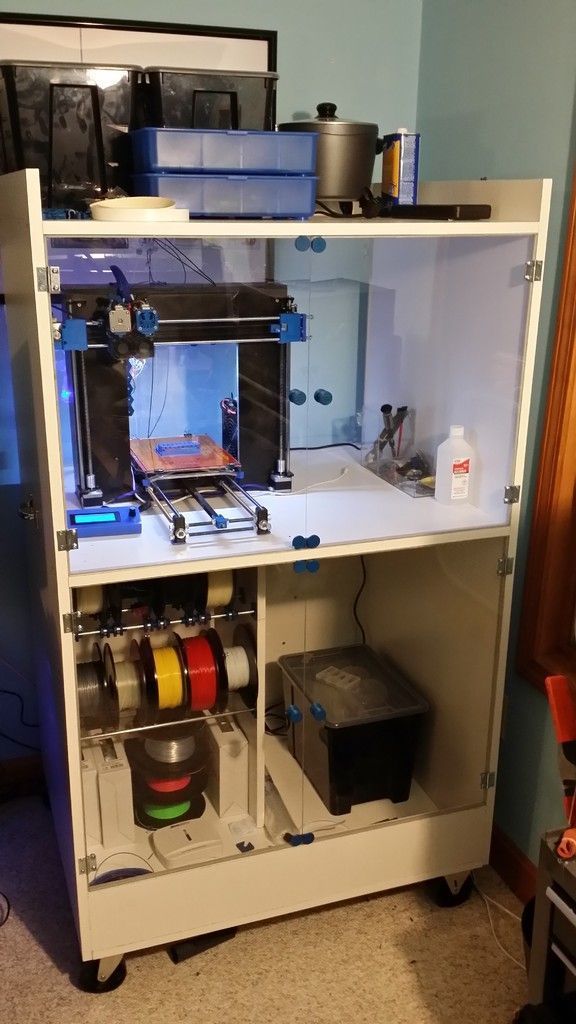 nine0003
nine0003
The accuracy of conventional stepper motors decreases with increasing speed, while Wembi allows you to increase accuracy even at high speeds. This is achieved by the fact that Wembi emulates the operation of a stepper motor using a commutator motor, with greater accuracy - 2650 or even 3500 steps per revolution, depending on the settings. The system is equipped with active cooling of the motors and the control unit - there are small quiet coolers.
The device is supplied with software that allows you to fine-tune the operation of the controller and motors. nine0003
RhinoSmart
Who: For anyone who doesn't want to watch the print process for hours and control the material feed.
RhinoSmart Filament Loss Detector.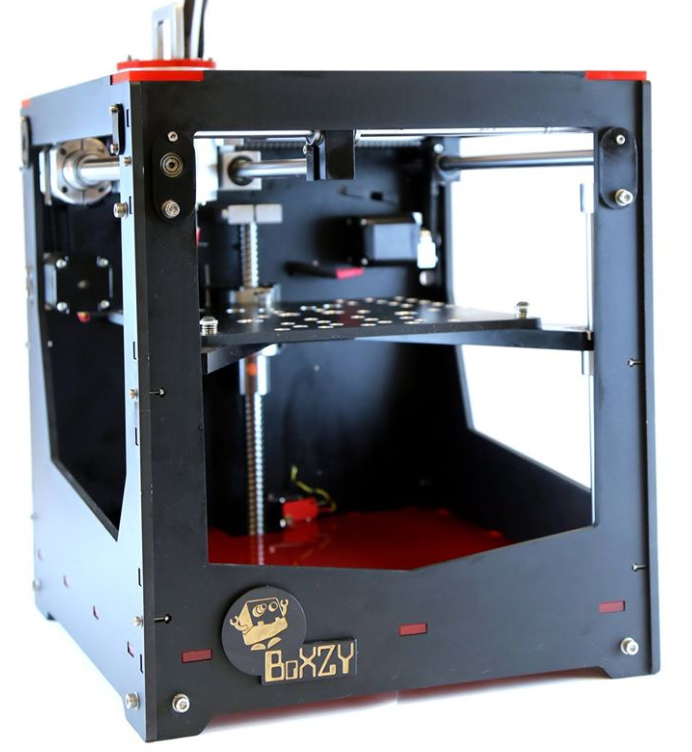 The device is designed to prevent consequences in cases where the filament in a 3D printer gets stuck or runs out. Such a nuisance can occur for various reasons and threatens with printing defects, and sometimes it can lead to malfunctions.
The device is designed to prevent consequences in cases where the filament in a 3D printer gets stuck or runs out. Such a nuisance can occur for various reasons and threatens with printing defects, and sometimes it can lead to malfunctions.
If material is difficult to get into the extruder, RhinoSmart will pause the 3D printer to correct the problem and then resume printing. nine0003
Some 3D printer manufacturers have taken the trouble to create such a module, but their detectors only fit their printers.
The device is quite simple and consists of several 3D printed parts, an Arduino switch, a couple of bearings and a set of connecting wires. The package includes 3 sets of wires from 20 to 80 centimeters long.
The use of RhinoSmart is especially relevant in cases where printing is carried out on several 3D printers at once and it can be difficult to keep track of all of them. nine0003
3D printer filament spool holder & storage case system
Who: Any 3D printer using spool filament.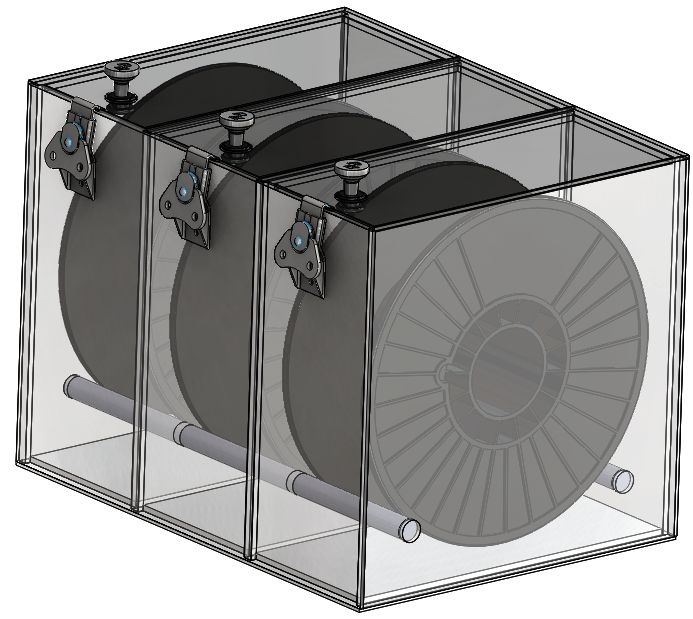
Filament storage and handling system. These are specially designed containers that protect materials for 3D printing during storage from dust and other external influences and allow them to be used with greater convenience. Also inside there is a compartment with silica gel, which absorbs excess moisture and prevents it from affecting the filament. nine0003
The container is interesting in that it can be placed next to the printer in any position and at any angle, and it will properly feed the material for printing.
An additional plus is that this case is much more convenient to carry and transport than bare spools of material or boxes with them.
Smoothieboard
Who: Anyone who builds their own 3D printer or CNC router.
Smoothieboard is still “fresh”, a project of 2013, but that is why, perhaps, not everyone knows about it, but the thing is interesting and may be useful for many. This is the CNC controller board. nine0003
Why is she interesting? This is a specially designed universal board for controlling any CNC devices - 3D printers, milling machines, laser machines.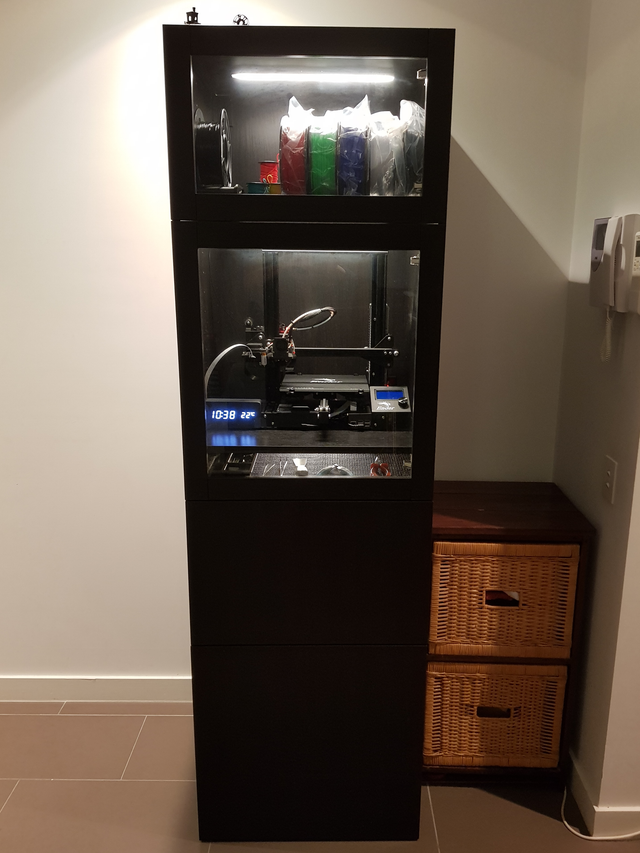 This is an Open Source project - a team of developers and enthusiastic users make up the project community, which is constantly working together to improve and support it.
This is an Open Source project - a team of developers and enthusiastic users make up the project community, which is constantly working together to improve and support it.
Any changes to the settings and firmware of the board can be made via a regular USB cable. The modular structure of the software allows you to add program blocks that are needed specifically for your device, without the need to edit existing ones. nine0003
In addition, the board's software is friendly to common 3D editing and layering programs and works great with them.
Most of the other open source projects in this area use eight-bit AVR microcontrollers (like those used in Arduino), while the Smoothieboard runs on a more powerful 32-bit LPC1768 Cortex-M3 ARM microcontroller.
This is a completely different power, which gives more precise and smooth control of workflows, at a similar cost of the hardware itself. nine0003
Years have passed, but the project continues to develop successfully by releasing software updates, continuing sales and supporting users, which most likely indicates its demand.
3D Printer Filament Storage Stand that Dries Filament
Storage stand for multiple spools of filament with moisture control.
Failed on Kickstarter, but interesting in principle, the project is a storage and dryer for several spools of filament, from which plastic can be directly fed into a 3D printer (and with some minor refinement - into several printers standing nearby). nine0003
The main reason for the failure is most likely that anyone can assemble such a design on their own or order for an amount less than the requested $219-319, and therefore there was not enough demand for it as a commodity. However, the idea itself is very good, you can take it into service and do something similar.
PolySmooth & Polysher
PolySmooth & Polysher is a complete solution for printing without visible layers, including:
-
PolySmooth print media, soluble with common industrial alcohols (ethanol and isopropyl).
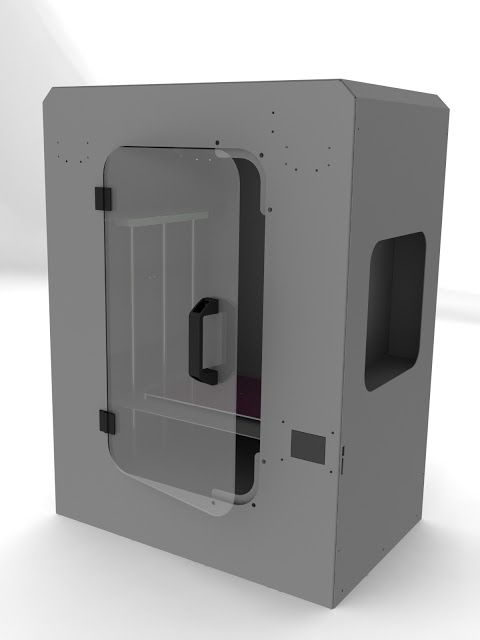
-
Polysher polishing/glazing unit, which is an automatic bath where alcohol in the form of a fine mist acts on printed products.
The project is remarkable in that it allows you to do without toxic and very smelly acetone. This makes creating smooth 3D printed surfaces much less of a hassle than before. nine0003
“Polishing” only takes 10 minutes.
Very useful things often appear on Kickstarter and other crowdfunding platforms, many of which then start an independent life in serial production and free sale. And some, even if they don’t find a response on Kickstarter itself, can push the idea to create something of their own, even more interesting.
Free STL file Honeycomb Wall Storage・3D printer model to download・Cults
nine0132 LEGO Brick
Free
Best Files for 3D Printers in the Art Category
Wolverminion (easy printing without support)
1,50 €
Flip text: STOP WARS
Free
Eater Decoration
1.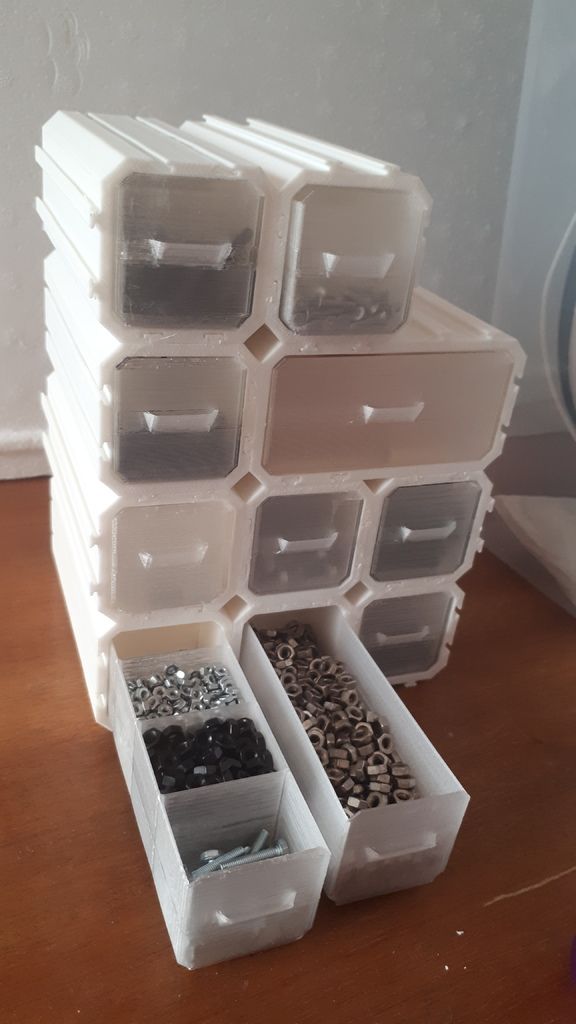 89 €
89 €
Free
Zombie controller holder
1.89 €
Allosaurus (light seal without support)
1,50 €
Chibi Chocobo
Free
Atlas Class Dreadnought (Star Trek Online)
Free
Art category bestsellers nine0138
Flexi PRINT-IN-PLACE Hand
1,84 €
☃️ Monster Snowman - XMAS TREE ORNAMENT☃️
2,50 €
Bearded Dragon Articulated Toy, imprinted body, snap head, cute flexi
3,28 €
CUTE CROCODILE WITH FLEXIBLE PRINT IN PLACE
2. 78 €
78 €
Skeleton hand with flexi print
1.88 €
Crystal Dragon, Articulating Animal Flexi Wiggle Pet, Print on the Spot, Fantasy
3,77 €
FLEXIBLE STANDING STANDING YETI
2.78 €
Biting Dragon
3 €
nine0132 GHOST ZU - GHOST WITH FEET2.66 €
Kangaroo and Joey on flexi printer
2.78 €
Rattlesnake articulated toy, imprinted body, snap head, cute flexi
3,72 €
Cute frog with flexi print
1.84 €
Cute circus baby elephant with flexi print
2.78 €
Triceratops on flexi printer
2.